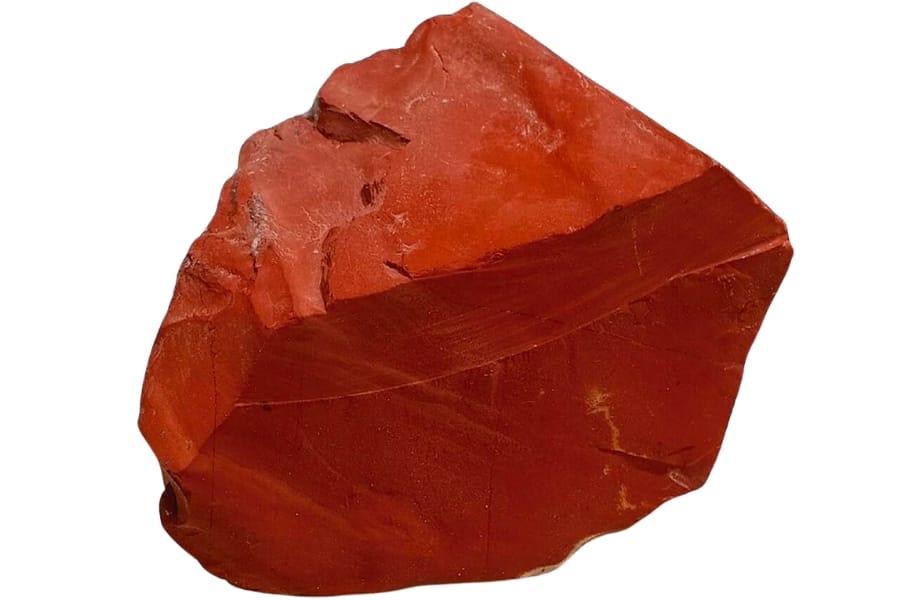It can be tricky to know if what you’re looking at is a real jasper or a copycat. In this article, we’ll teach you how to identify jasper and how to tell if a jasper is real. We’ll look at the distinguishing properties that set it apart from other rocks and minerals.
We’ll also introduce you to the most common materials and rocks that are often sold and manipulated to look like real jasper. You’ll learn very helpful tips, too, on how to sniff out a fake jasper and avoid buying it for the price of a real one.
By the end of this article, you’ll be able to tell real jasper from fake ones just by observing and doing the tips and tricks that we’ll cover here. Let’s get started!
Overview Of Natural Jasper And Why Fakes Are Common
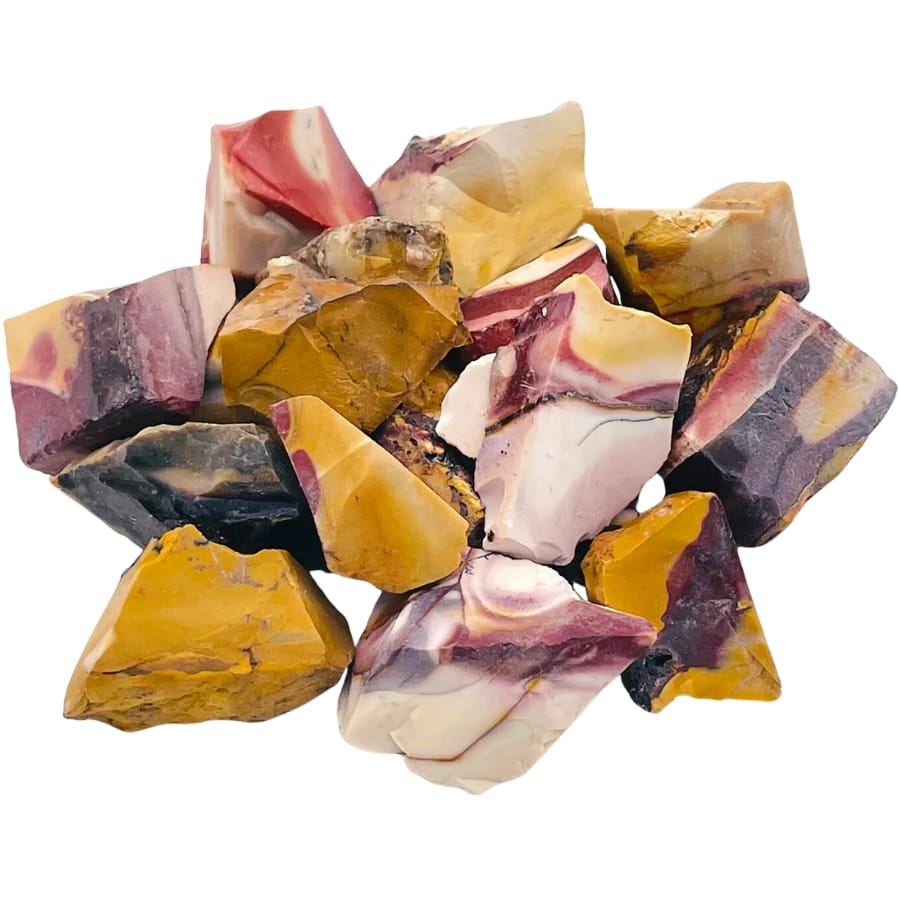
Jasper comes from the quartz family, which includes some of the most common minerals on Earth. It starts as a kind of mud, full of tiny particles of minerals. Over time, this mud gets squished and heated, and these tiny particles come together to form jasper.
One of the coolest things about this rock is its variety of colors and patterns. It can be red, yellow, brown, green, and even blue or purple. These colors come from the different minerals that were in the mud when the jasper was forming.
Sometimes, it has patterns that look like landscapes, stripes, or even spots, too. This is why every piece of jasper is unique— you’ll never find two pieces that are exactly the same.
Jasper is also pretty hard, which makes it great for making things that need to be durable. People have been using it for making jewelry. It’s also popular for decorative items like sculptures or vases because of its colors and patterns.
Its uniqueness, beauty, and the skill it takes to shape it into jewelry all influence the value of jasper. It’s also valued for its history and meaning. Different cultures believed it had special powers, like healing or protection. Even though this is not backed by science, the history and stories behind jasper make it even more special.
Why you’re seeing more fake jasper these days
There’s been a rise in fake jasper being sold lately, and there are a few reasons why this is happening.
First, real jasper is getting more popular and it’s becoming a trendy choice for jewelry and decorations. When something becomes popular, some sellers start selling fakes to make quick money from it.
Another reason is that technology has gotten better at making fake stones. It’s easier to create stones that look a lot like real jasper. Some fakes are made from cheaper kinds of stone or glass and then dyed to mimic jasper’s colors and patterns.
The cost is also a big factor. Real jasper can be expensive, especially the kinds with really beautiful patterns or rare colors. Fakes, on the other hand, are much cheaper to make. So, some sellers might try to pass off fake jasper as real to get a higher price for a cheap product.
Because these fakes can look pretty convincing, it’s not always easy to tell them apart from the real thing, especially if you’re not an expert.
How To Identify Real Jasper
But you don’t have to be an expert to learn how to identify your rocks. If you’re wondering whether what you have is a real jasper, here are a few tips and tricks that you can do:
Check the color and patterns
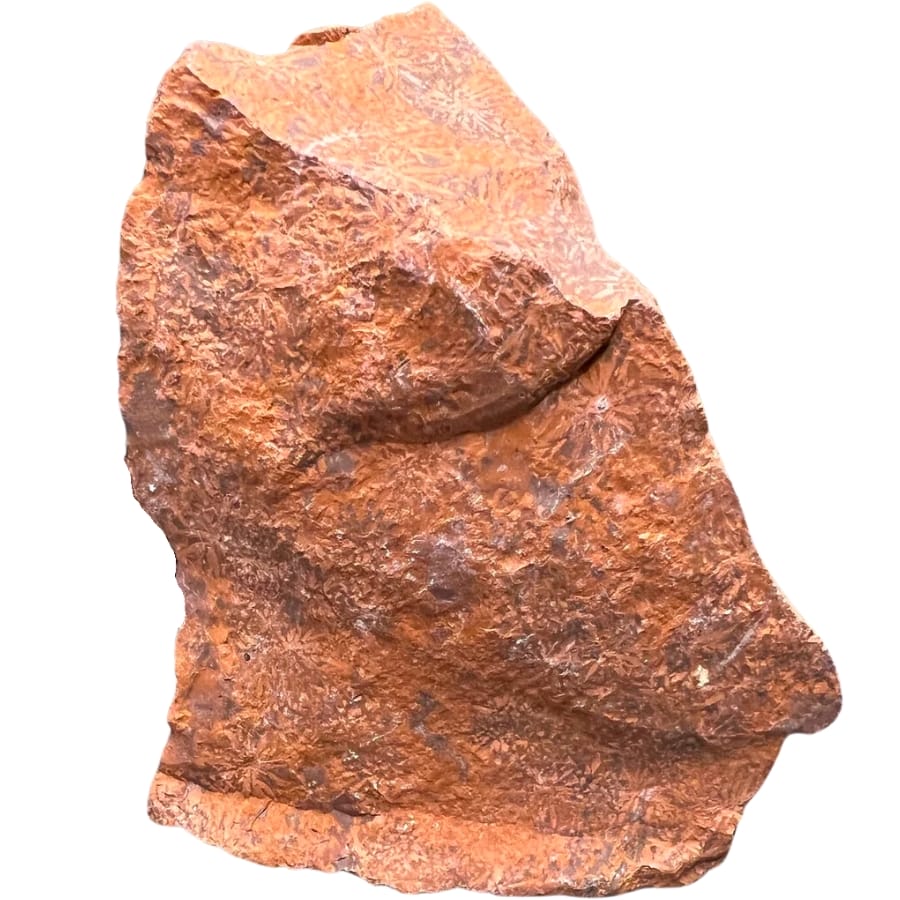
Real jasper is known for its earthy colors, like reds, browns, yellows, and greens. These colors aren’t super bright or shiny; they’re more muted, like colors you’d find in nature.
Also, jasper sometimes has unique patterns. These can look like landscapes, stripes, or even swirls. No two pieces of real jasper have the exact same pattern, which is part of what makes it special.
On the other hand, fake jasper often has colors that are too bright or look unnatural. The patterns might be too perfect or repetitive, which is a clue that they could be man-made.
Remember, nature isn’t perfect, so the imperfections in real jasper’s patterns are a sign of its authenticity.
Look at its surface
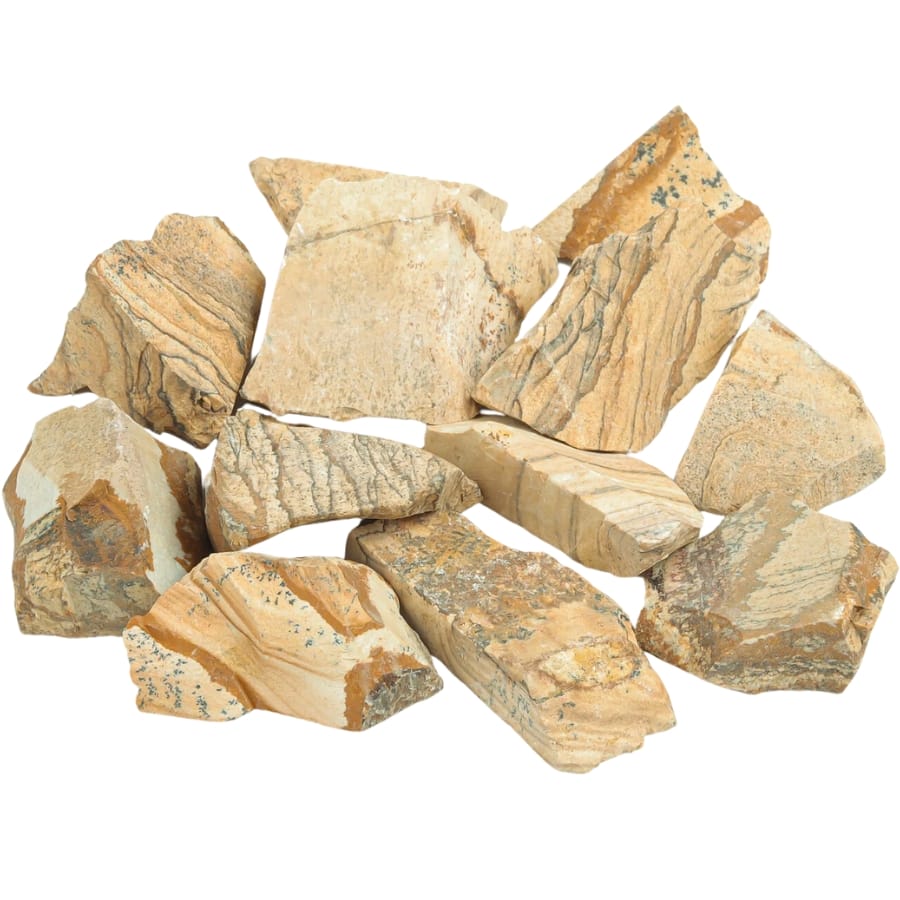
Real jasper has a surface that’s not too polished or overly shiny. It feels kind of like touching a piece of glass, but without the slippery feel.
Its surface should also have a matte finish, meaning it’s more like a stone than a piece of shiny metal.
If you find a jasper that’s super glossy or has a very shiny, almost plastic-like surface, then it might be a fake.
Some fake jaspers are made from materials like glass or resin, which can be made to look really shiny. These materials are often used to imitate the look of real jasper but don’t have the same natural, subtle shine.
Test its hardness
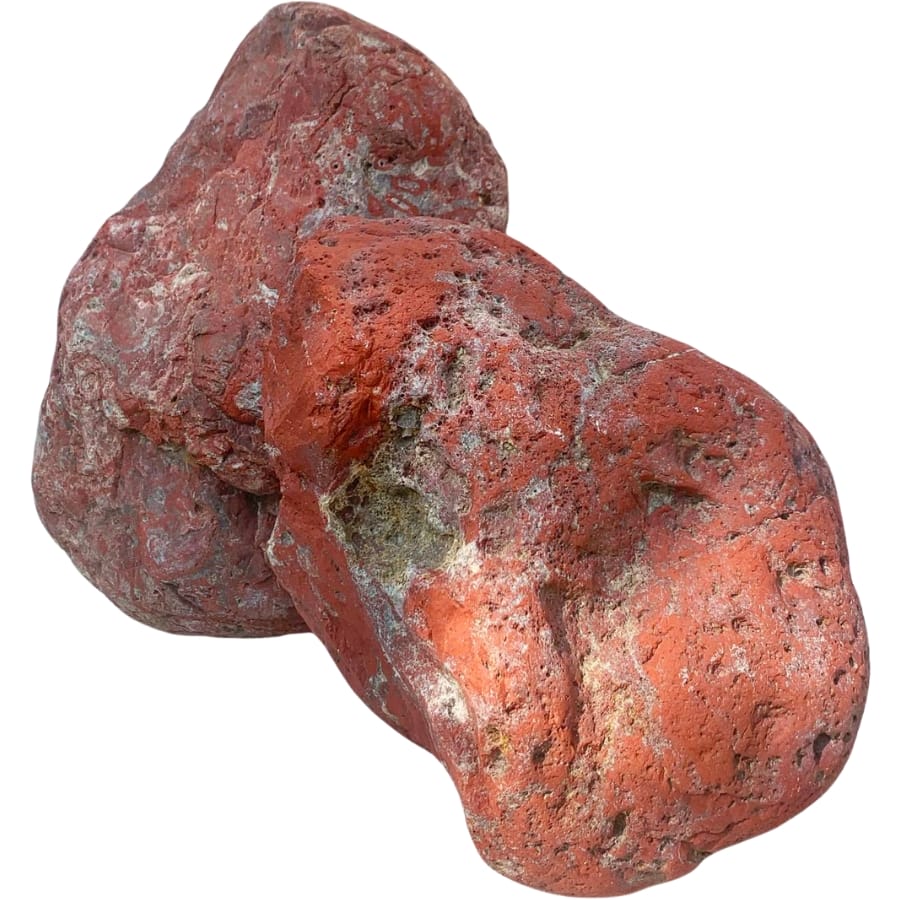
Since jasper is a type of quartz, it’s pretty hard at around 6.5 to 7 on the Mohs Scale of Hardness. It’s strong enough to scratch glass or even metal.
So, one way to test it is by gently trying to scratch a piece of glass with your jasper. If it leaves a scratch, there’s a good chance it’s real. But be careful not to hurt yourself or damage something when you do this test.
If the jasper can’t scratch glass, or if it gets scratched easily by something like a coin, it might not be real. Fake jasper can be made from softer materials that won’t pass this test.
Use a magnifying glass to check for grains
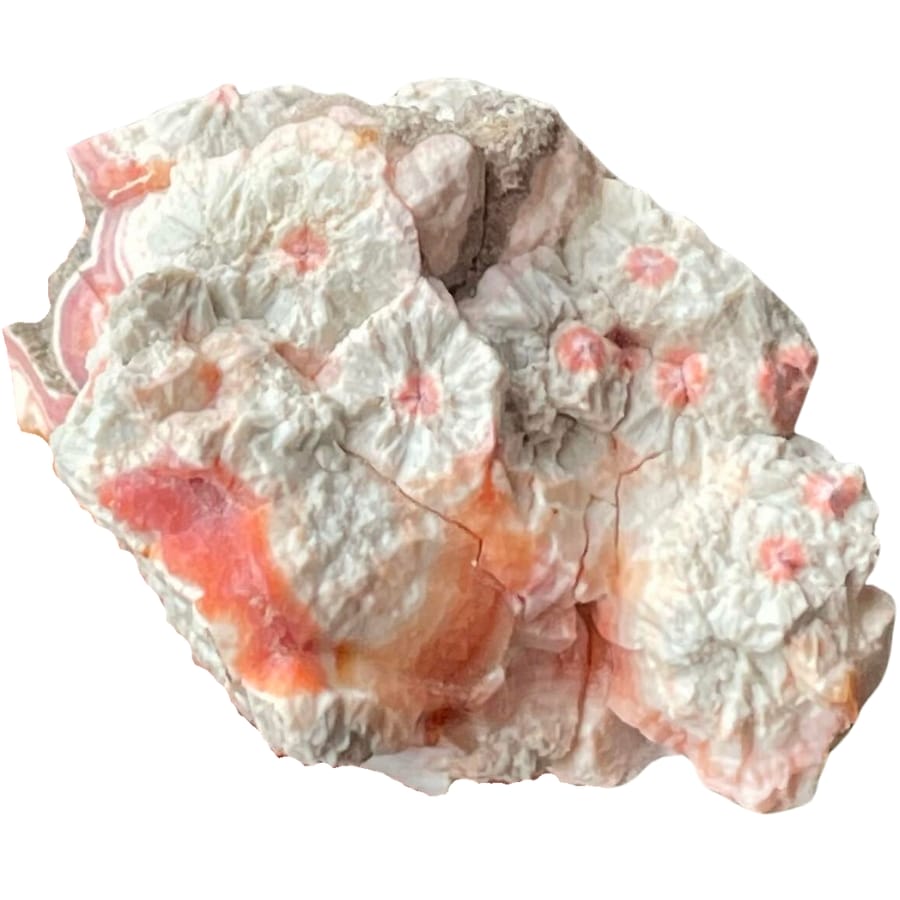
Real jasper is made from tiny mineral grains that got squished together over a long time. When you use a magnifying glass, you can see these tiny grains or specks in the stone. They might be really small, but they’re a sign that the jasper is natural.
On the other hand, if you look at a stone under a magnifying glass and it doesn’t have these tiny grains, it might be fake. Fake jasper can be made from glass or plastic, which look smooth and don’t have these natural grains.
So, when you check a stone with a magnifying glass and see those little specks, it’s a good hint that you’re holding real jasper.
The Different Types Of Fake Jasper And What They Look Like
If you know how to find jasper, it will save you a great deal in making sure it’s real. Another thing that will help you is if you’re familiar with the different types of fake jasper out there.
Below are the most common fakes that you might encounter:
Agate
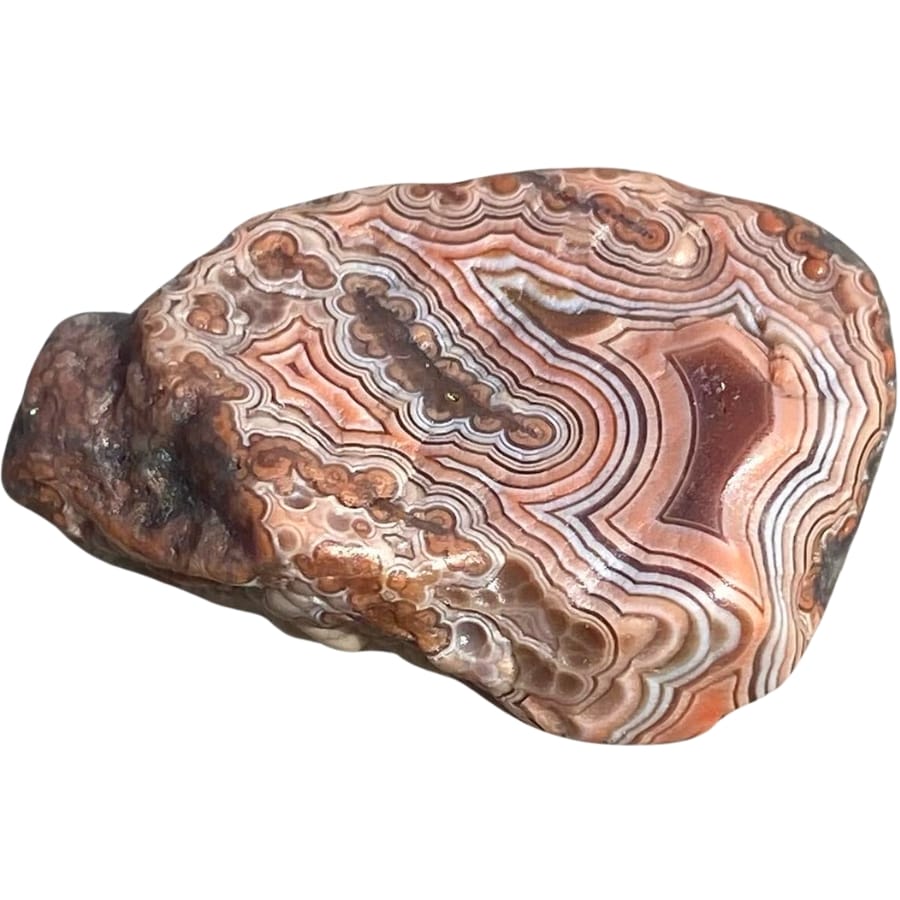
Agate and jasper are both types of quartz, but they form in different ways.
When volcanoes erupt, they leave behind empty spaces in the rock. Over time, water with minerals in it flows through these spaces. The minerals get left behind and slowly build up in layers, creating agate.
If you compare jasper vs agate, their differences are evident. So to sell agate as jasper, people dye it into common colors of this rock. Sometimes, they’ll even try to create patterns that look like the ones in real jasper.
Agate can also be polished to make it shiny, which can make it look more like some types of jasper.
How you can identify agate being sold as real jasper
Notice the colors
Dyed agate might have very bright or unnatural-looking colors to imitate jasper. Real jasper’s colors are usually more muted and natural-looking. If the stone’s color seems too vivid, it could be a sign of dyed agate.
Look at the layers
Agate often has clear, stripe-like layers, while jasper doesn’t. If you see distinct layers in the stone, it’s more likely to be agate, even if it’s been dyed to look like jasper.
Check the transparency
Agate can be somewhat see-through or translucent, especially when held up to light. Jasper is usually opaque, which means you can’t see through it at all. So if the stone lets some light through, it’s probably agate.
Glass
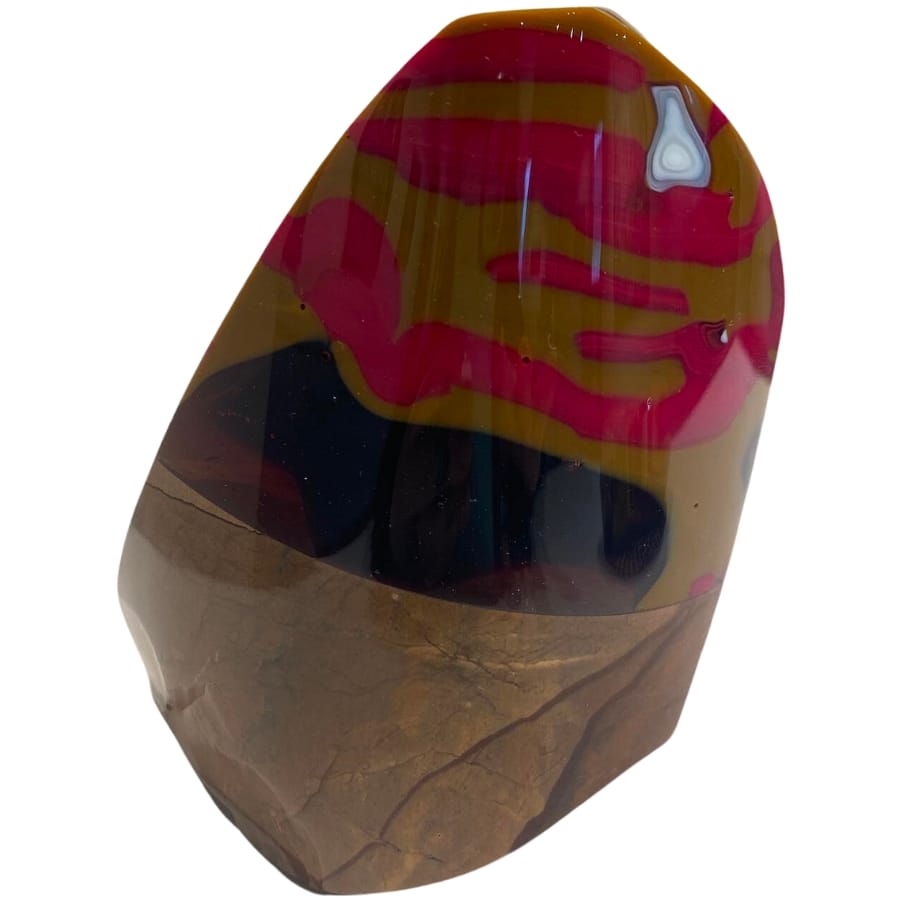
Glass may be very different from natural stones like jasper, but it’s often used to imitate it.
To make glass, people mix sand with other things like soda ash and limestone. Then, they heat this mixture to a very high temperature, until it melts and turns into a liquid. When this liquid cools down, it becomes solid glass. This process allows people to shape the glass into almost any form and add different colors.
When it comes to selling glass as jasper, there are a few tricks that are used. First, they can add colors to the glass while it’s melting to make it look like the natural colors of jasper. They try to match these as closely as possible.
Then, they might shape the glass to look like natural jasper stones, like rounded or oval shapes. Sometimes, they even add artificial patterns to the glass to make it look more like jasper, which naturally has unique and varied patterns.
How you can identify glass being sold as real jasper
Check the shine
Glass is usually much shinier and glossier than real jasper. If the stone is reflecting light like a mirror or looks really glassy, it’s probably not jasper.
Look for bubbles
When you closely look at a glass, you might see tiny bubbles inside it. Real jasper won’t have these bubbles, so if you spot them, it’s likely glass.
Do the scratch test
Jasper is hard enough to scratch glass, but glass won’t scratch itself. If you try to scratch the surface of the stone with something like a piece of glass and it doesn’t leave a mark, the stone might be glass and not jasper.
Plastic resin
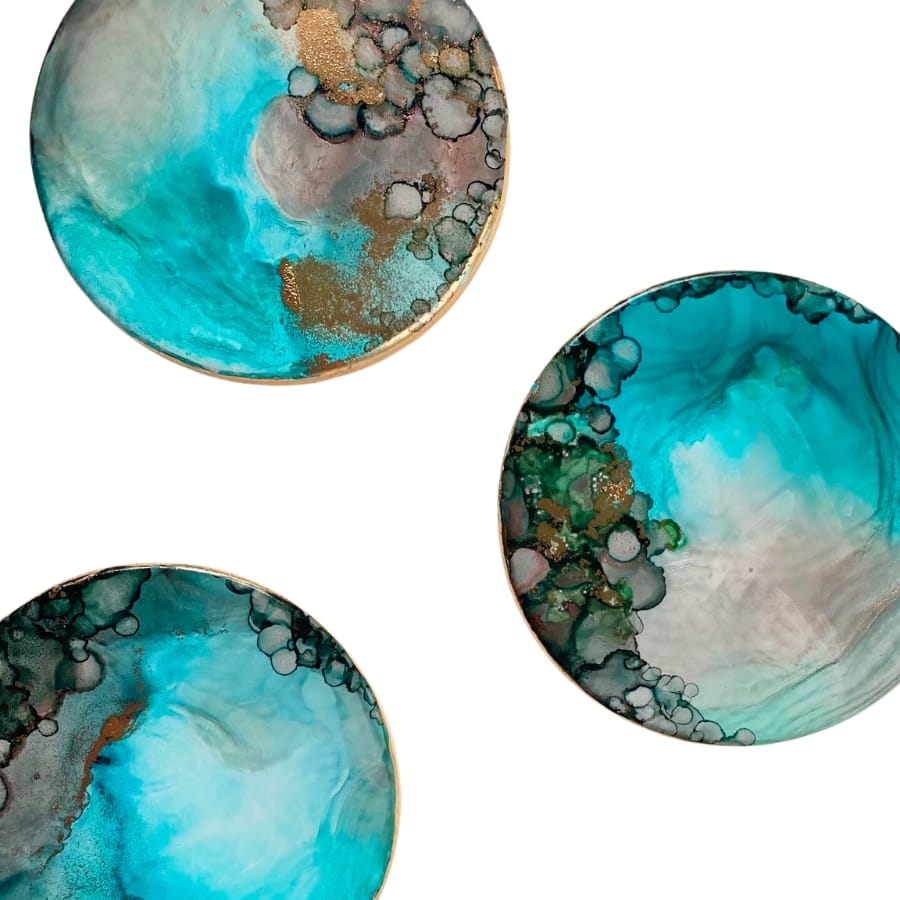
Plastic resin is a man-made material that can be shaped and colored to look like many different things, including jasper.
It starts as a liquid made from chemicals that come from oil and natural gas. When they’re mixed together and treated, they turn into a thick, sticky substance. This substance can then be poured into molds to make different shapes.
Once the resin is in the mold, it’s left to harden from a liquid into a solid plastic. This process can be pretty quick, sometimes taking only a few hours. When it’s solid, the resin can be taken out of the mold, and it will keep the shape of whatever the mold looks like.
To make the resin look like jasper, people add colors to it before it hardens. Sometimes, they even add little pieces of things like metal or other stones to give it more texture and make it look more like real jasper.
How you can identify plastic resin being sold as real jasper
Feel the weight
Plastic resin is usually lighter than real jasper. If the stone feels surprisingly light for its size, it might be made of plastic resin.
Look for scratches or dents
Plastic resin can scratch or dent more easily than jasper. If the stone has small scratches or dents, it’s a sign that it might be plastic resin, not real jasper.
Notice the surface finish
Plastic resin can have a very smooth, sometimes almost plastic-like surface. Real jasper has a more natural, matte finish. If the stone looks too perfect or feels like plastic, it’s likely not real jasper.
Chalcedony
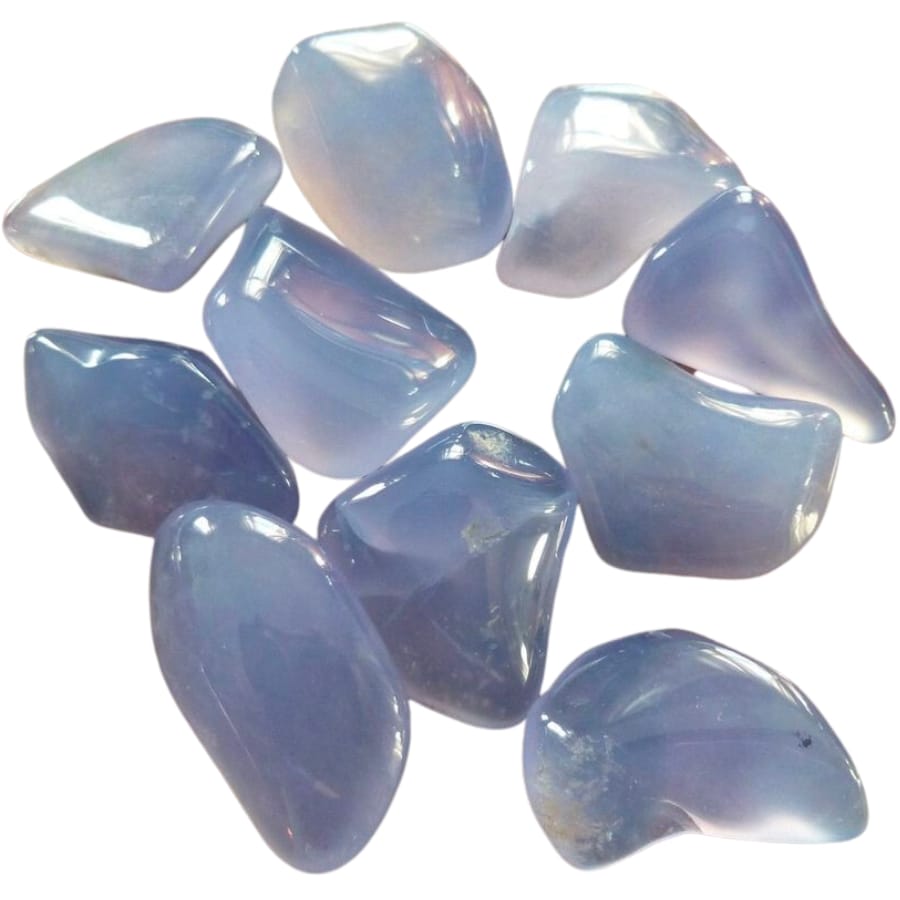
Just like jasper, chalcedony is part of the quartz family. When volcanic rocks cool down and have tiny spaces in them, water with silica seeps into these spaces. Over time, this silica sticks together and forms chalcedony.
This rock is usually more see-through and less colorful than jasper. It often looks kind of cloudy or waxy. Because it’s not as colorful, people sometimes dye it to make it look more like jasper.
Also, chalcedony can be shaped and polished to look like jasper stones. It can be cut into beads for jewelry or carved into different shapes.
But even when it’s dyed and shaped, there are ways to tell it’s not real jasper.
How you can identify chalcedony being sold as real jasper
Look for waxiness
Chalcedony often has a waxy or slightly glossy appearance. Jasper, on the other hand, has a more matte finish. If the stone looks waxy or slightly shiny, it might be chalcedony.
Do a transparency test
Chalcedony can be translucent, while real jasper is opaque, which means you can’t see through it. If the stone lets some light through or has a cloudy appearance, it’s likely chalcedony, not jasper.
Feel the texture
Chalcedony tends to have a smoother, softer feel than jasper. If the stone feels unusually smooth or soft for jasper, it might be chalcedony. Jasper typically has a harder, more grainy texture.
Howlite
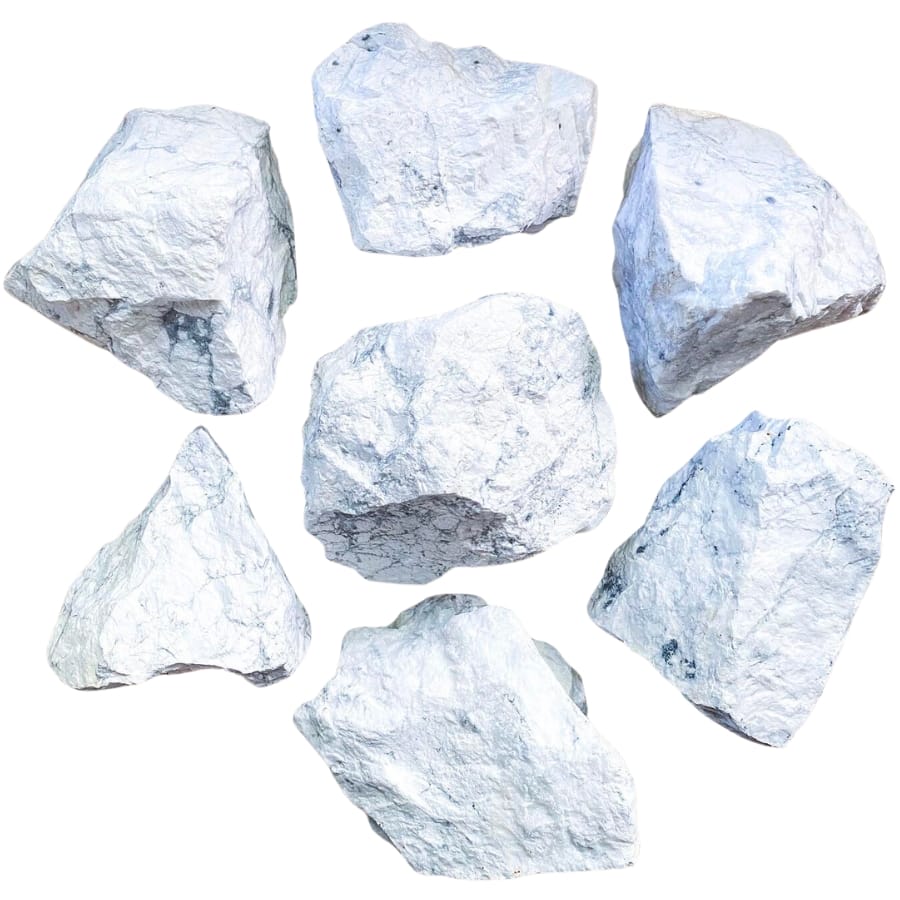
Howlite is often used to imitate other more colorful stones like jasper. It’s naturally white or gray and has these neat web-like dark veins running through it.
This rock forms mostly in places where there is gypsum, a soft mineral, and it grows in irregular nodules, kind of like lumpy rocks.
Howlite is porous, which means it has tiny holes that can absorb stuff easily. This is where it gets interesting. Because it’s so good at absorbing things, people often dye it to make it look like other stones, including jasper.
To sell howlite as jasper, they use dyes to color it in the rich reds, greens, yellows, and other colors that you see in real jasper. They can even try to mimic the unique patterns that it has, although they can’t quite get the same look.
How you can identify howlite being sold as real jasper
Look at the color
Howlite is often dyed to look like jasper. If the color of the stone seems too bright or uniform, it might be dyed howlite. Real jasper has more natural and varied colors.
Examine the patterns
Howlite has distinctive web-like, dark veins. Jasper’s patterns are more like swirls or landscapes, not web-like. If the stone has these kinds of veins and the color seems painted on, it’s likely dyed howlite, not jasper.
Feel the surface
Howlite has a different texture than jasper. It can feel a bit more porous or grainy, not as smooth and solid as jasper.
How To Tell If Jasper Is Real Vs Fake
While we’ve already discussed the most common rocks, minerals, and other materials that are made to look like real jasper, the creativity of fakers is boundless, so you might encounter other fake jaspers out there.
To make sure you don’t get fooled by these fakes, below are some tips to help you decipher fake jasper when you see or touch one.
How to identify fake jasper when it’s cut or polished
Here are some telltale signs of fake jasper when it’s cut or polished:
Bright or unnatural colors

Jasper has pretty earthy and natural colors that are not super bright or flashy. They look like colors you’d find in a forest or a desert. When you have a fake jasper, the big giveaway is the color.
Fake jasper made from glass or plastic can be dyed to look really bright and colorful. These colors can be almost neon or just too perfect. They might be super bright reds or greens that don’t look like they came from nature.
Sometimes, other rocks and minerals are dyed to look like jasper, too. These can also have colors that are too consistent or just don’t look right. Real jasper has colors that are more mixed and varied.
Perfect or repetitive patterns
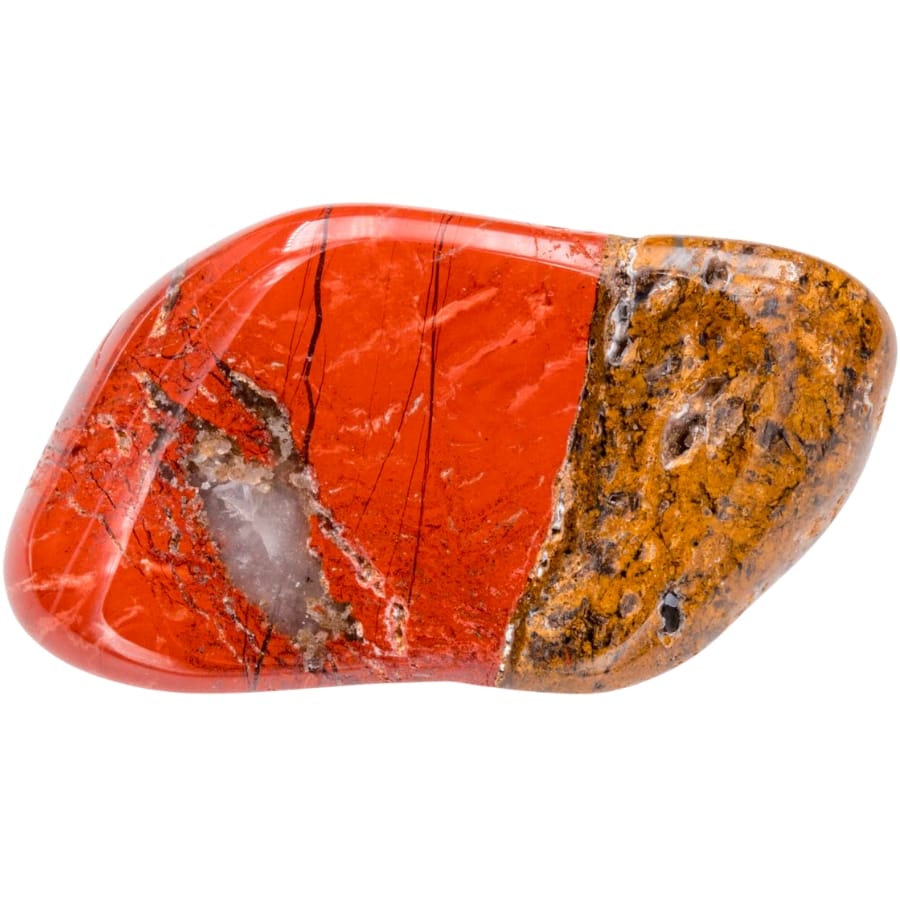
Each piece of real jasper has its own unique pattern– no two pieces are exactly the same. It might have swirls, stripes, or spots, but they all look a little random, like the patterns you see in leaves or rocks. This randomness is key to spotting real jasper.
A fake jasper is often too perfect as the people who made it only copied jasper’s patterns. But instead of being random and unique, these patterns often look too neat or repetitive.
If you see a stone with patterns that look exactly the same across the whole surface, or if the patterns repeat perfectly, it’s a big clue that the stone isn’t real jasper.
Porous
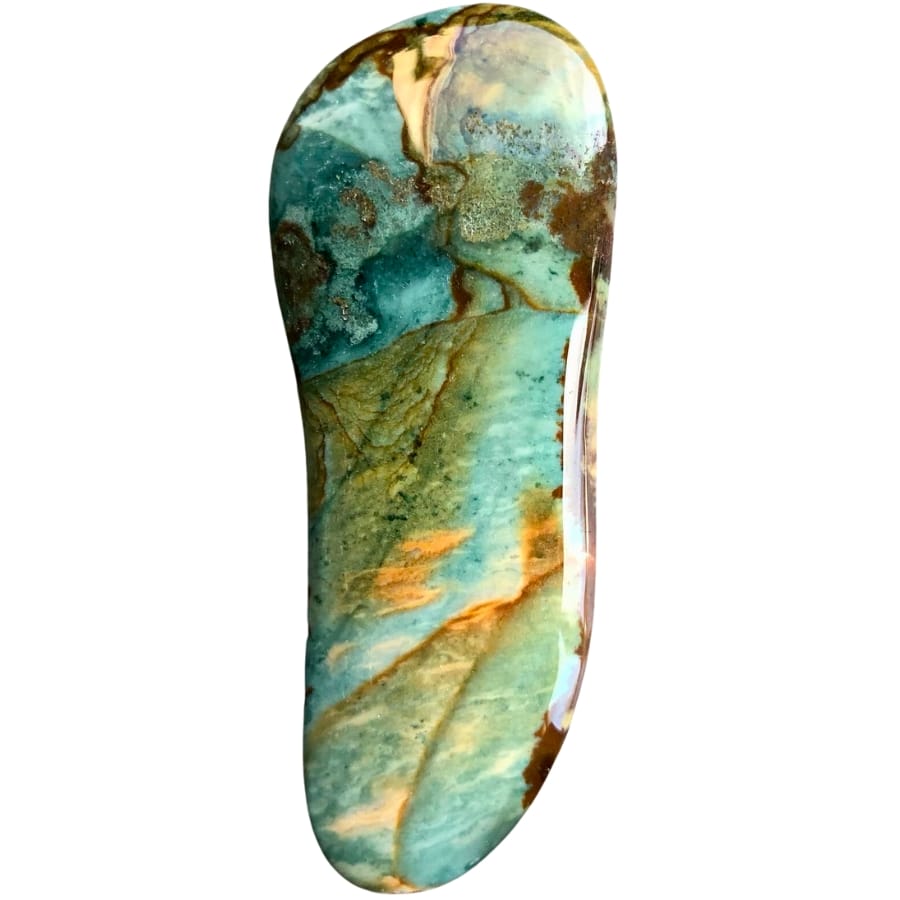
Jasper is not very porous, which means it doesn’t have a lot of tiny holes that can soak up water or other liquids. This is a helpful clue when you’re trying to figure out if a piece of jasper is real or fake.
Real jasper, when it’s cut and polished, should feel pretty solid and dense. It doesn’t absorb water easily.
However, some materials used to make fake jasper, like certain types of plastic or other rocks, can be more porous.
A quick way to test this is by putting a drop of water on the stone. Real jasper will have the water drop just sit on its surface, not soaking in. But if the water gets absorbed or sinks into the stone quickly, it’s a sign that the stone might be porous and therefore, not real jasper.
How to identify fake jasper when it’s raw
When you’re looking at a raw specimen that is presented as a real jasper, here are the characteristics you should look out for. Once you spot them in your specimen, they’re like fake jasper:
Shiny surface
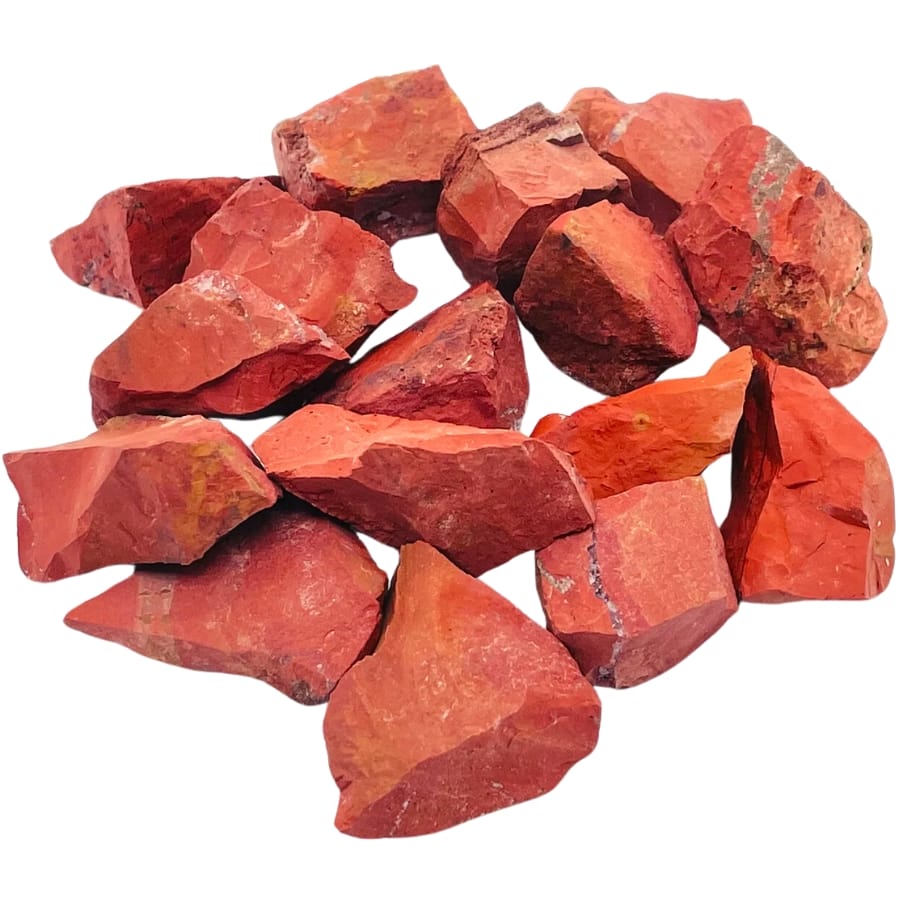
One big clue as to whether a jasper is real or fake is how shiny it is. Real raw jasper isn’t super shiny. It has more of a dull, matte finish. This means it doesn’t reflect light like a mirror. It might have a little bit of shine, but it’s pretty subtle.
If you find a piece of raw jasper that’s shiny, like it’s almost sparkling or looks like glass, that’s a sign it might be fake.
Some people make fake jasper out of glass or plastic, which are much shinier than real jasper. They might even coat other rocks with shiny stuff to make them look like jasper.
But this shine shine is a big giveaway. If the raw stone is super glossy and reflects a lot of light, it’s probably not real jasper.
Easily scratched
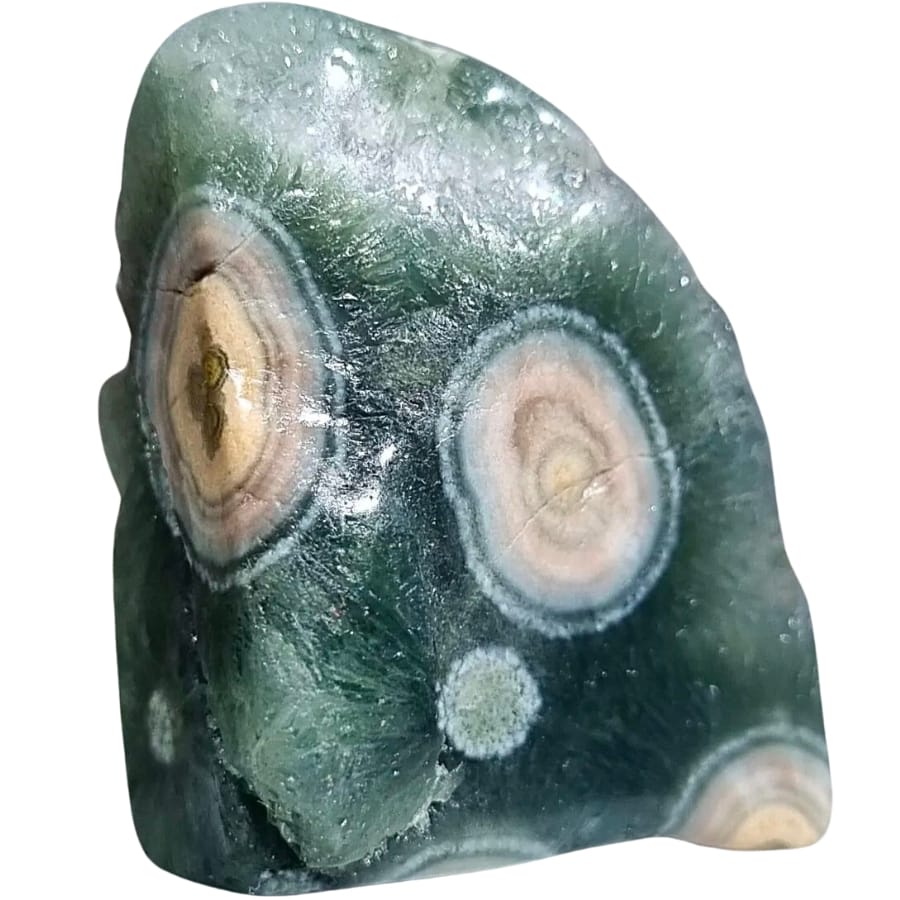
Jasper is hard to scratch. When it’s raw and uncut, it should be difficult to make a mark on it. This is because it’s a type of quartz, which is known for being hard and durable.
If you try to scratch real raw jasper with something like a coin or a nail, it shouldn’t leave much of a mark.
But if you have a stone that’s being sold as jasper and it gets scratched easily, it might be a fake. Some materials used to make fake jasper aren’t as hard as genuine. They can get scratched pretty easily.
Even texture
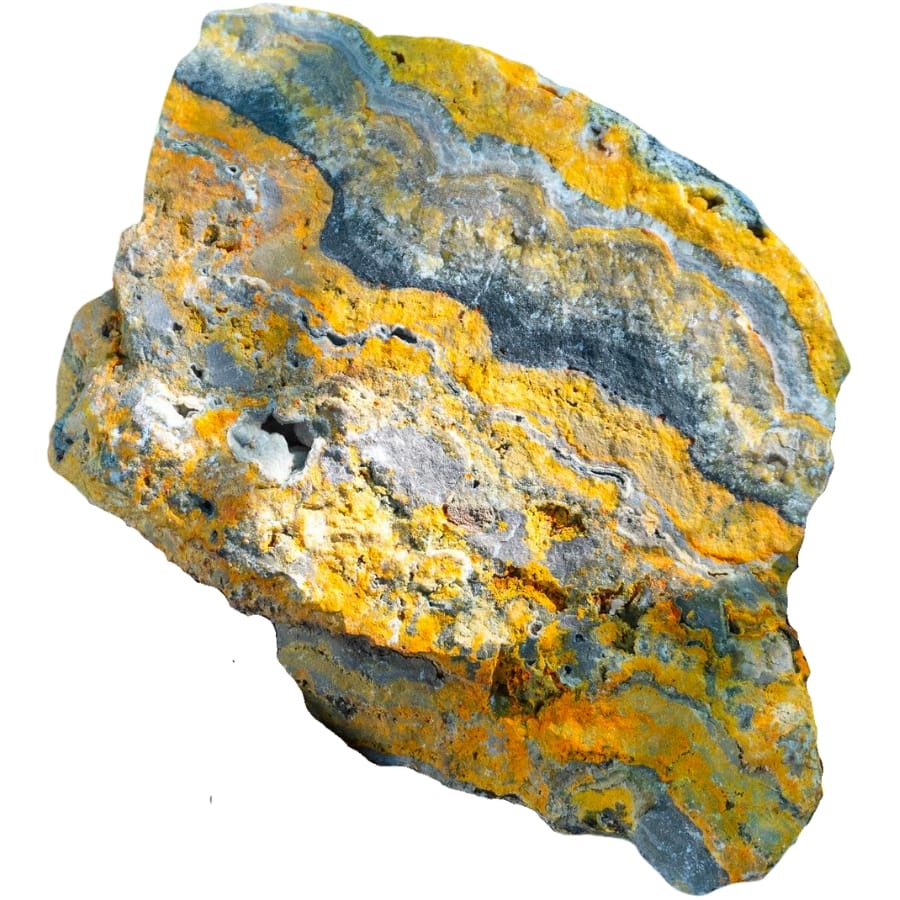
A raw jasper has a natural and uneven texture. Its surface isn’t all smooth and the same all over. It might have bumps, rough spots, or areas that are smoother than others. This uneven texture is because it forms in nature, and nature isn’t perfect.
But if you find a stone that’s being sold as raw jasper and it has a very even, smooth texture everywhere, it might be fake.
Fake jasper can be made from materials that are easy to shape and make smooth. These materials can be made to look very uniform and perfect, which real jasper isn’t.

